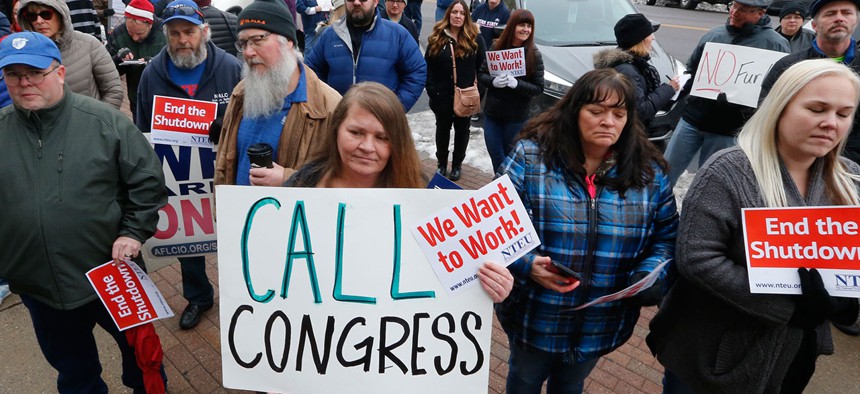‘Tens of Thousands’ of Government Contractors Laid Off Due to Shutdown
The prolonged government shutdown is getting "pretty scary" as the number of federal employees and contractors forced out of work could impact the nation’s next jobs report.
As unemployment filings among furloughed federal employees doubled last week across Maryland, Virginia and Washington, D.C., the effects on government contractors are beginning to take shape.
The shutdown is costing contractors an estimated $1.5 billion per week and companies that primarily serve the government have already hemorrhaged “tens of thousands of people,” according to David Berteau, who represents hundreds of companies as head of the Professional Services Council.
Those unemployed government contractors are likely to join the 9,000 furloughed federal employees added to unemployment rolls in the capital region during the week of Jan. 5, Berteau said.
“We have tens of thousands of people laid off or not working in the nine cabinet agencies and other agencies shut down,” Berteau said on a call with reporters Thursday. “Contractors are feeling more and more impact. Each day, we’re getting notices of stop-work orders from our member companies.”
Berteau said the shutdown’s employment and financial impacts will likely compound as it lingers on.
The government is stopping contracts daily across the Treasury, Agriculture, Homeland Security, Interior, State, Housing and Urban Development, Transportation, Commerce and Justice departments, as well as other agencies including NASA. In fiscal 2018, services contracts at those agencies—the contracts most likely to be halted due to lack of appropriated money—were valued at more than $70 billion.
Berteau said there are about 1 million government contractors that do everything from answer phones in call centers to analyze classified intelligence information. Unlike furloughed federal employees, who President Trump ensured will receive back pay with a bill signing Wednesday, the majority of contractors will receive no backed compensation.
“We’ve heard from a number of companies facing a tough dilemma, ‘Do I get rid of employees and save money or get rid of money to save employees and go out of business?’” Berteau said. “If this continues a lot longer, we’ll see a lot of companies shut their doors because they don’t have a line of credit available.”
Berteau said the effects from this extended shutdown are unlike previous shutdowns. He said some PSC member companies “have submitted invoices before the government shut down that haven’t been paid.”
SAIC, a large defense and tech contractor, publicly stated it hadn’t been paid by the government for as much as $50 million in work performed and is spending $10 million per week to pay staffers that would otherwise be furloughed. Berteau said in many cases contractors are unable to reach government contracting officers by phone or email regarding pending acquisitions because the government personnel or offices are furloughed.
The shutdown’s effects are likely to worsen exponentially, Berteau said.
He predicted another doubling of the number of furloughed federal employees filing for unemployment “to 20,000 or 30,000” for the week ending Jan. 12, which is “getting close to” a number that could impact the nation’s monthly jobs report expected from the Bureau of Labor Statistics on Feb. 1.
There’s also the question of how federal employees and government contractors will return to their original jobs when the government reopens. The longer the shutdown lasts, the more likely it is people will seek employment elsewhere. Last week, nearly 800,000 feds missed a paycheck.
“At some point, people are going to get another job. The magnitude of this restart is going to be harder this time than in previous shutdowns,” Berteau said. “How long can people work without getting paid? That’s a question we’ve never tested to this level before. It’s pretty scary.”




